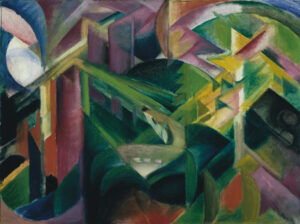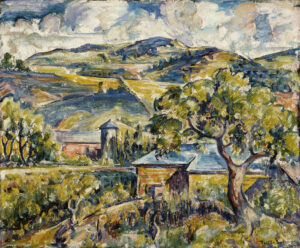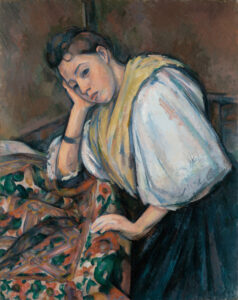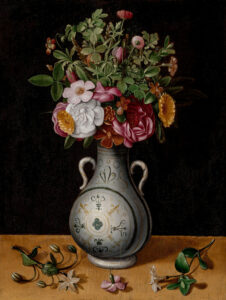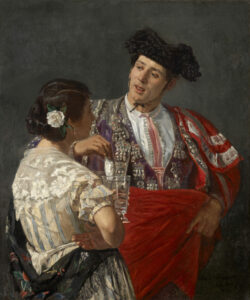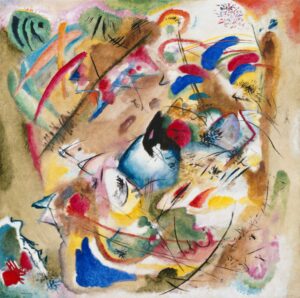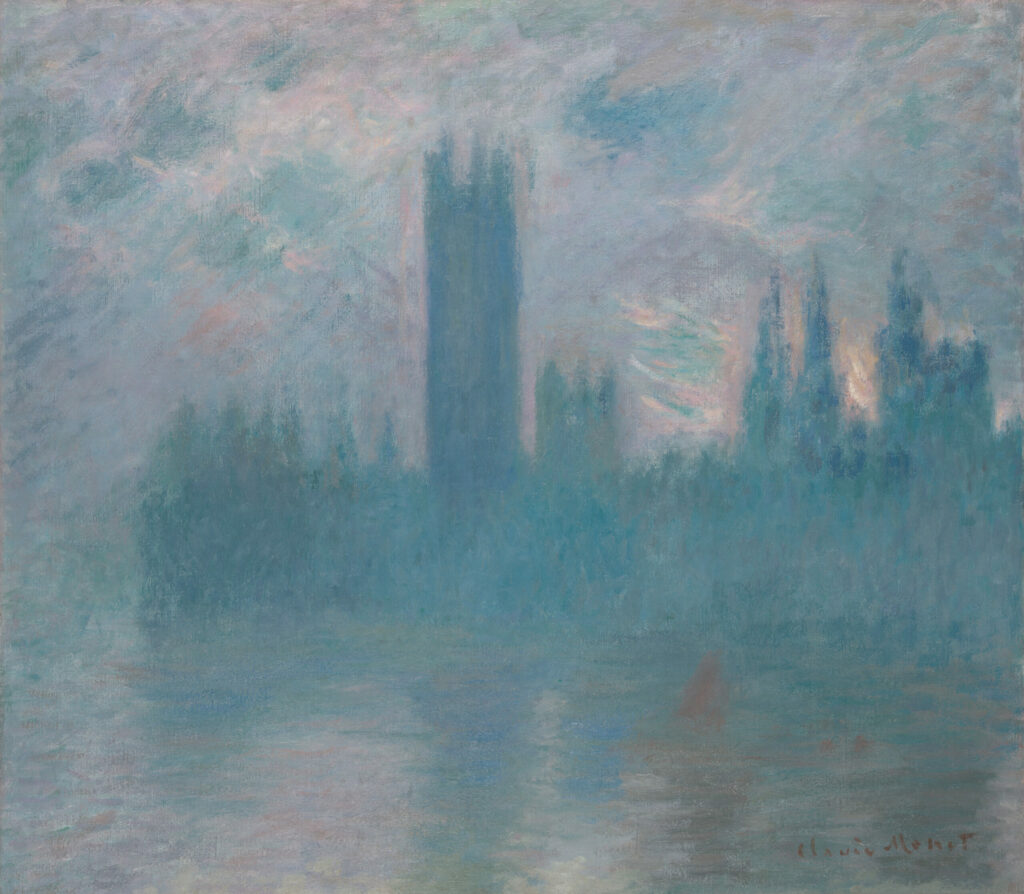
The Houses of Parliament, London (1900-1901) illustrates Monet’s Impressionist maturity during his London sojourns.
Painted from the terrace of St. Thomas’ Hospital, it captures Parliament in the vaporous atmosphere of twilight. The artist dissolves the Gothic architecture in a veil of colored mist dominated by blue and mauve tones. This poetic vision follows in the lineage of Turner, who immortalized the 1834 fire from a similar vantage point, but above all reveals the influence of Whistler and his London “Nocturnes.” Monet transcends simple topography to capture the misty soul of London, transforming industrial pollution into a chromatic symphony. Architectural contours dissolve in the changing light, privileging sensation over description. This series testifies to Impressionism’s evolution toward nascent abstraction, where objective reality gives way to the pure expression of light and atmosphere in their perpetual temporal metamorphosis.
Further Information
- The Houses of Parliament, London, 1900–1901, by Claude Monet
- 81.2 × 92.8 cm (32 × 36 9/16 in.), oil on canvas
- The Art Institute of Chicago, on view in European Painting and Sculpture, Gallery 243
- https://www.artic.edu/artworks/16584/houses-of-parliament-london
Claude Monet (1840-1926) revolutionized Western art by founding the Impressionist movement. Born in Le Havre and introduced to plein air painting by Eugène Boudin, he developed a revolutionary approach privileging the direct capture of light effects. His series explore chromatic variations according to time of day and season. Settled in Giverny from 1883, he created his water garden and famous water lily ponds there. His London campaigns (1899-1901, 1904) produced around a hundred canvases sublimating the industrial Thames. A precursor of modern art, Monet freed color from its descriptive function to make it the pure expression of visual sensation, paving the way for the avant-gardes of the 20th century.

